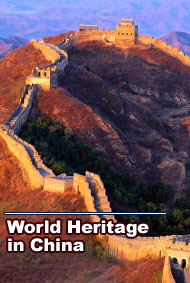
|
|
|
Chinese paper-cut
In 2009, The Chinese paper-cut was inscribed on the Representative List of the Intangible Cultural Heritage of Humanity by the UNESCO. Description Present throughout China and in various ethnic groups, paper-cut is a popular art integral to everyday lives. A predominantly female pursuit, it is transmitted from mother to daughter over a long period of time, beginning in childhood, and is particularly common in rural areas. It earns the most skilful artists respect and admiration. Many techniques are used: the paper can be cut or engraved with a chisel, coloured or left blank. Increasingly, modern technologies are used. Motifs, which vary greatly and are often devised by the artist, depend on the region of origin (for example, in southern China fine and delicate motifs predominate) and the purpose of the product, which might be used for interior decor (windows, beds and ceilings), festivities (weddings, birthdays and ceremonies), or prayers (invoking the rain, warding off the devil, and so on). As a key part of Chinese social life in all ethnic groups, paper-cut expresses the moral principles, philosophies and aesthetic ideals of its exponents. It continues to provide an outlet for emotion and is experiencing an unprecedented revival. Documents Nomination form: English|French Consent of communities: English Decision 4.COM 13.09 The Committee (…) decides that [this element] satisfies the criteria for inscription on the Representative List, as follows: R1: Chinese paper-cut is constantly recreated and passed on from generation to generation, providing the Chinese people with a sense of identity and continuity; R2: Inscription of the element on the Representative List would contribute to the visibility of intangible cultural heritage at the local, national and international levels and promote respect for cultural diversity and creativity expressed in the variety of cuts, styles, sizes and figures; R3: The nomination describes well the current, recent and intended efforts to ensure the viability of the element; R4: The nomination describes wide participation of the communities concerned and demonstrates their free, prior and informed consent; R5: A large number of local manifestations of the element are inscribed on the National List of Intangible Cultural Heritage administered by the Department of Intangible Cultural Heritage of the Ministry of Culture. |